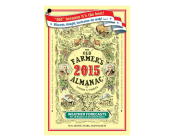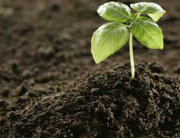(CNNMoney.com) — Forget the conventional wisdom that says veggies must be grown on vast farms in the Midwest. What if commercial-scale crops took root inside cavernous city warehouses, without sunlight or soil?
Call it urban farming 2.0. Over the past decade, city agriculture has largely been the province of non-profit organizations, school groups, renegade gardeners and restaurants sowing seeds on rooftops. But the newest breed of city farmers are businessfolk. In their hands, urban agriculture is scaling up to meet a rising demand in city centers for safe, organic and locally grown food.
Full Article …
Keeping your lawn healthy will make it more resistant to pests and disease and therefore require fewer interventions on your part. That will not only save you time and money, but its also better for the planet. Some tips:
GETTING STARTED
Choose the right grass for your region. This is the first step to a healthy lawn, since a well-chosen grass will form a denser turf that requires less water and is better able to resist pests and weeds with less fertilizer and pesticide. You can contact your local cooperative extension to find out which grass varieties best match your locale and climate and when to plant. Or, consult our customized grass-zone map.
Prepare the soil. No matter where you live, a soil test is the best way to know what your lawn needs. Pros often do it yearly, but every few years is probably fine unless your lawn looks bad. Most state universities test soil for a nominal fee. You can also find private soil-testing labs (search “soil testing [your state]” on the Web for options). If the test results show problems, contact your local cooperative extension to learn about potential solutions.
Add compost. Composted organic matter helps soil by making it more porous and increasing its productivity. As a guideline, spread a 3-to 4-inch-thick layer over the area and till it into the soil. For more information, visit our compost page.
Consider alternative landscaping. The time and money (about $700 per acre annually) needed to maintain a lawn has led many homeowners to seek out alternatives, such as replacing a portion of their grass with other types of ground cover or landscaping. One option is to incorporate native wildflowers. Click here to read a related article published in Mother Earth News. A smaller lawn also means fewer emissions from your mower since youll be using it less.
MOWING TIPS
Your mower matters. A lawn mower or ride-on tractor that cuts cleanly and distributes mulched clippings evenly is one way to help keep healthy lawns thriving. (See our Green Ratings and recommendations for push mowers, self-propelled mowers, and lawn tractors.)
Avoid cutting too short. Chopping off more than one-third of a grass blade’s height at once can be detrimental. For example, if you want a 3-inch mowed height, mow when the grass is just over 4 inches tall. Avoid cutting below the green leaf blades into the brown grass stems, which weakens the grass plants and leaves it vulnerable to aggressive weeds or pests. Check with your local cooperative extension service for the ideal height for your type.
Mulch as you mow. Returning mulched clippings to your lawn rather than bagging and disposing of them can reduce the need for lawn fertilizer by about 30 percent and helps to maximize the lawns ability to trap carbon.
Compost what you dont mulch. If your grass has grown too high to mulch, compost the bagged clippings, so you can eventually use them to feed your lawn or garden.
Learn more about lawn care, equipment, and maintenance with our Complete Lawn & Yard Guide, available to subscribers. Click here for subscription information.
WATERING BASICS
Add just the right amount of water. Applying too much water to a lawn can invite disease, but too little can encourage crabgrass and other weeds that thrive in dry soil. Most lawns need roughly 1 inch per week through the growing season. Using a rain gauge is the most precise way to see how much water your lawn is getting. When using a sprinkler, try to keep water off sidewalks, driveways, and other non-lawn areas to avoid waste.
Water in the morning. Thats when theres less wind to blow the water and less sunlight to evaporate it. Night watering promotes mold and fungus. Morning watering will also discourage pests and disease by giving your lawn the rest of the day to dry.
Water thoroughly. Deep but infrequent watering discourages pests and diseases by letting the lawn dry thoroughly between waterings.
FERTILIZING NATURALLY
Create natural fertilizer using your own grass. See mowing section above for details.
Consider natural organic fertilizers. If youre looking for alternatives to synthetic chemical fertilizerswhich have been linked to water pollution and are typically derived from nonrenewable fossil fuels there are several natural organic fertilizers available, including manures, composts, and agricultural byproducts. These fertilizers contain relatively low amounts of nutrients, which are also released slowly, so using too much probably won’t damage the lawn. But you’ll need to apply more of them. To avoid those that may contain weed seeds, choose alfalfa, blood meal, and soybean meal.
Keep in mind that the term organic has two different meanings when it comes to fertilizer: 1) when it refers to organic matter, it means it consists of anything that once lived, including decomposed plant and animal matter , and 2) when it refers to how its been produced; however, there are no national organic standards for fertilizer production, so you shouldnt pay more for this label.
Don’t let leaves pile up. It’s important to clear leaves off the grass frequently because leaves block sunlight, and wet leaves are heavy and promote disease. Instead of bagging leaves, use your mower to mulch them or add leaves to your compost pile.
Know when to fertilize. Pale, yellow-green grass is a sign that your lawn needs more nitrogen, the key ingredient in fertilizer; using the right fertilizer at the right time is the quickest, easiest way to provide that nitrogen so that your lawn can better withstand pests and extreme heat and cold. If you fertilize once a year, do it in September for cool-season, Northern grasses, and early June for warm-season, Southern grasses. Otherwise, make two to three applications in fall, one month apart, and one in spring for cool-season grasses; three applications are needed during the summer for warm-season grasses.
BEYOND PESTICIDES
Consider some alternatives. Pesticideswhich include insecticides, herbicides, and fungicidescan kill or adversely affect insects, weeds, and disease-causing organisms, but they may also be harmful to you, your pets and the broader environment. If you have a problem with pests or weeds, you may be able to address it with potentially safer alternatives, including botanical and biological controls. Corn gluten meal, for example, can prevent crabgrass and other weed seeds from germinating without threatening anything else, while ladybugs (formally called lady beetles) can be used to control aphids. For more tips, see the University of Californias Integrated Pest Management Web site and Cornell Universitys Lawn-care Web site. Or, consult our Complete Lawn & Yard Guide.
If you decide to use pesticides, always read the label first, including all precautions and restrictions, then follow the directions carefully. Signal words on the labels will also give you an idea of how hazardous a product can be: Products labeled with Danger are the most hazardous, followed by Warning, and then Caution. Several pesticides include irritants, neurotoxins, reproductive toxins, and carcinogens. Only active ingredients and others proven to be toxic must be listed specifically on the package. Here are several to watch for, according to the EPA:
Likely human carcinogen
Carbaryl
Probable human carcinogen
Pronamide
Chlorothalonil
Possible human carcinogen
Acephate
Dacthal (DCPA)
Isoxaben
Pendimethalin
Trifluralin
Triadimefon




Leave A Comment